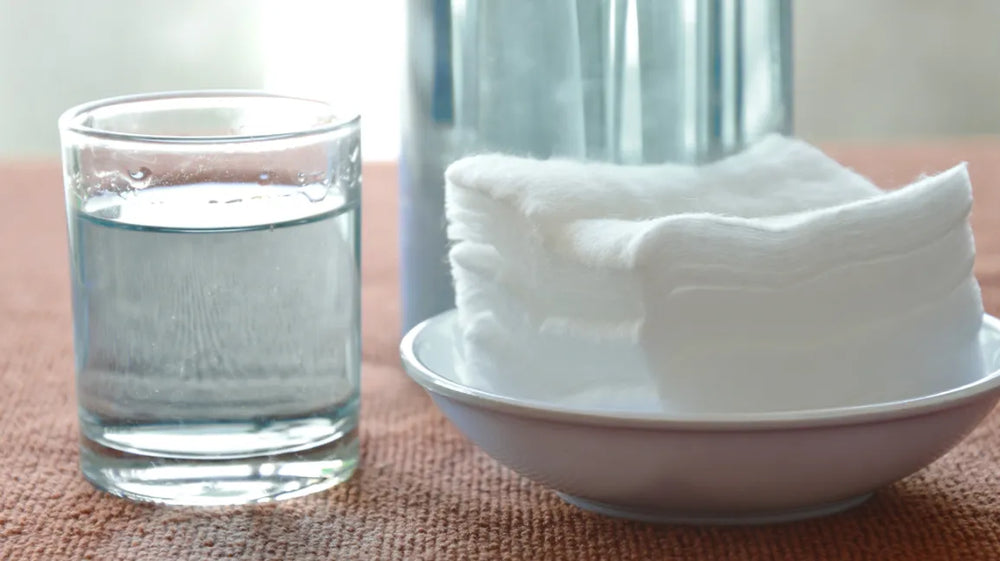You have no items in your shopping cart.

Hydrogen peroxide (H2O2) is a chemical compound that is a pale blue liquid at room temperature. It is a powerful oxidizer, meaning that it can readily donate oxygen atoms to other substances, and is used for a variety of purposes including cleaning, and bleaching.
Hydrogen peroxide (H2O2) breaks down into one H2O molecule and one O2 molecule, meaning, it breaks down into water and oxygen. The spare oxygen particle creates the oxygenation or bleaching effect.
In its pure form, hydrogen peroxide is a strong irritant to the skin, eyes, and respiratory system, and can cause severe burns. It should be handled with caution and used only in well-ventilated areas.
When diluted, hydrogen peroxide can be used as a disinfectant to kill bacteria and viruses on surfaces, and is sometimes used as a mouthwash or to rinse cuts or scrapes to help prevent infection. However, it should not be ingested, as it can cause serious harm to the body if ingested in large amounts.
General uses of hydrogen peroxide
Cleaning and Disinfecting:
When diluted with water, hydrogen peroxide can be used to clean and disinfect surfaces. It can kill bacteria and viruses on contact, making it a useful alternative to harsh chemical disinfectants. There are no known disease-causing bacteria or fungi that develop resistance to hydrogen peroxide.
Bleaching:
Hydrogen peroxide can be used to bleach fabrics and papers. It is often used in the production of pulp and paper, as well as in the textile industry. Hydrogen peroxide is also used in hair products to lighten hair.
Hair Treatment:
Hydrogen peroxide is a common household product that is often used as a hair treatment to lighten the hair or remove stains from the scalp. It works by breaking down into water and oxygen when it comes into contact with living tissue, which can help to bleach the hair and remove stains.
To use hydrogen peroxide as a hair treatment, mix a small amount of hydrogen peroxide (usually 3% concentration) with an equal amount of water. Apply the mixture to your hair, making sure to coat all of the hair evenly. You can then either let the mixture sit in your hair for a few hours or overnight, or you can rinse it out after a few minutes.
Hydrogen peroxide can be very drying to the hair, so it is important to follow up with a moisturizing conditioner after using it. It is also important to note that hydrogen peroxide can cause some side effects, such as irritation or dryness on the scalp, if it is used in too high of a concentration. To avoid these side effects, be sure to dilute the hydrogen peroxide with water as directed and avoid getting it in your eyes or on your skin.
In general, hydrogen peroxide is a safe and effective hair treatment when it is used as directed. However, it is always a good idea to talk to a dermatologist or hair care professional before using any new hair treatment product, particularly if you have any pre-existing health conditions or allergies.
Mouthwash:
Hydrogen peroxide can be used as a mouthwash to help kill bacteria and freshen breath. It works by breaking down into water and oxygen when it comes into contact with living tissue, which can help to kill bacteria and other microorganisms in the mouth.
To use hydrogen peroxide as a mouthwash, dilute a small amount of hydrogen peroxide (usually 3% concentration) with an equal amount of water. Swish the solution around in your mouth for 30 seconds to 1 minute, then spit it out and rinse your mouth with water. You can do this once or twice a day, as needed.
It is important to note that hydrogen peroxide can cause some side effects, such as stinging or burning in the mouth, if it is used in too high of a concentration. To avoid these side effects, be sure to dilute the hydrogen peroxide with water as directed and do not swallow the mouthwash.
In general, hydrogen peroxide is a safe and effective mouthwash when it is used as directed. However, it is always a good idea to talk to your doctor or dentist before using any new oral hygiene product, particularly if you have any pre-existing health conditions or allergies.
First Aid:
Hydrogen peroxide is a common antiseptic that is used to kill microorganisms on the skin. It works by breaking down into water and oxygen when it comes into contact with living tissue, which can help to kill bacteria and other microorganisms.
Hydrogen peroxide is often used as a first aid antiseptic to clean minor cuts, scrapes, and burns. It can also be used to help prevent infections in wounds that are more serious. However, it is important to note that hydrogen peroxide should not be used on deep wounds or puncture wounds, as it can damage healthy tissue and delay the healing process.
In general, hydrogen peroxide is a safe and effective antiseptic when it is used as directed. However, it is important to follow the instructions on the label and to dilute the hydrogen peroxide with water if it is being used on the skin. Using undiluted hydrogen peroxide can cause skin irritation and other side effects.
Gardening and hydroponics
Hydrogen peroxide can be used in gardening and hydroponics in a number of ways. Here are a few examples:
As a cleaning agent:
Hydrogen peroxide can be used to clean and sterilize tools, pots, and other surfaces in the garden.
As a root soak:
Mixing hydrogen peroxide with water and using the solution to soak the roots of plants can help to oxygenate the soil and stimulate root growth.
As a foliar spray:
Hydrogen peroxide can be mixed with water and sprayed onto the leaves of plants to help control certain types of fungal infections.
As a seed treatment:
Soaking seeds in a solution of hydrogen peroxide and water can help to kill off any bacteria or fungi that may be present on the seeds and improve the chances of successful germination.
It is important to note that hydrogen peroxide can be harmful to plants if it is used in too high of a concentration, so it is important to be careful and follow the instructions on the label when using it in the garden.
Warning
Wear gloves: Hydrogen peroxide can cause skin irritation and dryness. It's a good idea to wear gloves when handling it to protect your hands.
Keep it out of reach of children: Hydrogen peroxide should be kept out of reach of children as it can be harmful if ingested.
Don't mix it with other chemicals: Hydrogen peroxide should not be mixed with other chemicals, as this can produce dangerous or toxic gases.
Don't use it on open wounds: Hydrogen peroxide should not be used on open wounds as it can damage healthy tissue and delay the healing process.
Don't overuse it: It's important to use hydrogen peroxide in moderation, as overuse can lead to skin irritation and dryness.
Use it in a well-ventilated area: Hydrogen peroxide can release oxygen gas when it breaks down, so it's important to use it in a well-ventilated area.
Summary
- Hydrogen peroxide (H2O2) is a pale blue liquid used for cleaning, bleaching and disinfecting surfaces.
- It breaks down into water and oxygen when it comes into contact with organic matter, which can help to bleach, and remove stains from materials.
- When diluted with water, hydrogen peroxide can be safely used as a mouthwash or first aid antiseptic to clean minor cuts, scrapes and burns.
- Hydrogen peroxide can also be used in gardening and hydroponics as a cleaning agent, root soak solution or foliar spray to control fungal infections on plants.
- Caution should always be taken when handling hydrogen peroxide; it should only be handled in well-ventilated areas according to instructions on label.

This information is intended solely for New Zealand residents and is of a general nature only. No person should act in reliance on any statement contained in the information provided, but at all times should obtain specific advice from a health professional.
